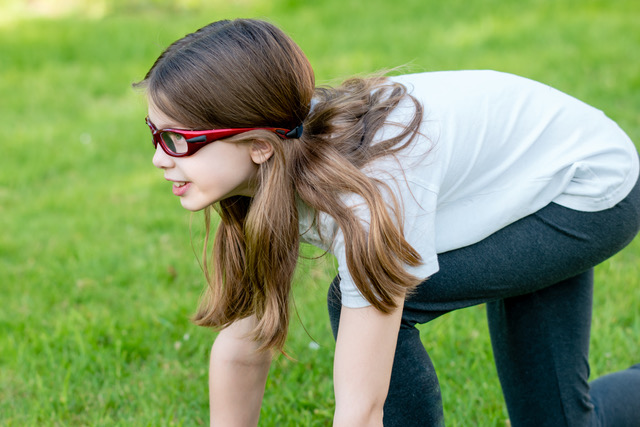By our Smarty friends at Charlotte Eye Ear Nose & Throat Associates, P.A.
One moment, your children are running around outside, having a good time. The next moment, they’re crying. Somehow, they hurt their eye. What could have happened? Today we’d like to talk about a few common ways your child might harm their eyes.
Corneal abrasions
If your child gets sand, dirt, or even glitter in their eyes, they may get a corneal abrasion. Corneal abrasions are scratches or injuries of the clear, front portion of the eye. These injuries are very common in children. They are also not usually very serious, are very treatable, and generally heal quickly. Long-term vision is rarely impacted.
Your child may show several different signs of a corneal abrasion, including eye pain, tearing, a red eye, light sensitivity, or a feeling of something in the eye, even if nothing is there.
Even though abrasions are usually not serious, you should still bring your child to the eye doctor for an examination because if it is not treated, it could become infected and turn into a corneal ulcer. Before you get to the doctor, gently rinse your child’s eye with sterile eye wash solution or artificial tears. This can help wash away any irritants. Having your child blink can also stimulate tear production and wash out any foreign object. However, if you do see something in their eye and it’s not washing out, don’t try to remove it. Doing so may further scratch the cornea. Instead, let the doctor remove any foreign material, CEENTA ophthalmologist Priyanka Kanakamedala, MD, said. The doctor may place antibiotic drops or ointment in your child’s eye.
An eye injury
Eye injuries are the leading cause of blindness in American children. Most injuries are sports related.
“There are more than 800,000 eye injuries every year in the United States, roughly one every 30 seconds,” CEENTA Eye Ancillary Services Manager Jay Russell said. “With 90 percent estimated to be preventable, protective eyewear is a must.”
Protective eyewear, such as safety glasses and googles, is made of ultra-strong polycarbonate and is 10 times more impact-resistant than other plastics, the National Eye Institute says. Ordinary glasses and contact lenses are not protective. In fact, they could be damaged while playing and actually hurt the eye. So, safety goggles should be worn over them.
Small children should also avoid playing with toys that fire projectiles, like slingshots or toys that fire missiles, as they could also cause an injury.
If your child hits him or herself in the eye, or if their eye looks red or abnormal, seek medical care.
Eye care for everyone at CEENTA
If your child did hurt their eye and you want a doctor to check it out, don’t hesitate to make an appointment at CEENTA. The physicians here are caring, compassionate, and sensitive to a child’s needs, and will have them playing outside again in no time.
This blog is for informational purposes only. For specific medical questions, please consult your doctor. Would you like an appointment with a CEENTA eye doctor? Call 704-295-3000. You can also request an appointment online or through myCEENTAchart.
Charlotte Eye Ear Nose & Throat Associates





